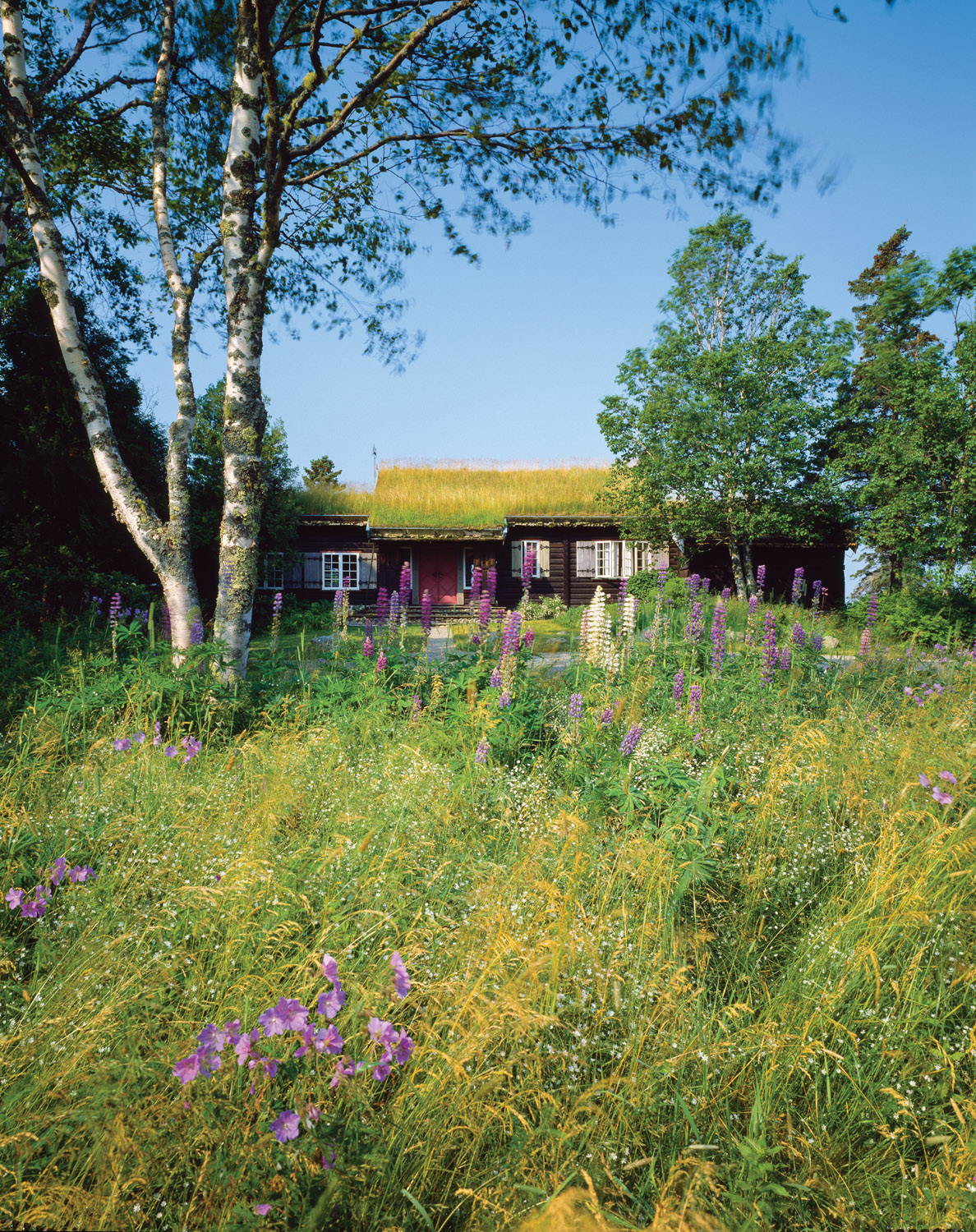Crowning the Norwegian log cabin in Maine is a sod roof. The owners affirm that the old-world feature keeps the interior cool in summer and provides some insulation in winter. It also plays a critical part in the construction of the house: Each log is shaped to cradle with the log below it. The extra weight of the sod roof locks the stacked logs tightly in place, and prevents drafts. The technique is ancient and ingenious.
At the top of a field of wildflowers, the Norwegian log cabin with a sod roof overlooks a secluded cove on a Maine island. Reassembling it in the 1950s started the building careers of several local men. (Photo: Brian Vanden Brink)
In this 20th-century example, a layer of asphalt under corrugated cementitious material separates the turf (consisting of grasses, soil, and roots) from the roof sheathing. Traditional Scandinavian roofs relied instead on several layers of birch bark (acting as a water seal) beneath the sod. The grassy roofs are called torvtak in Norway and Sweden. In rural areas, sod roofs were common into the 18th century, to be superseded by tile and metal. They enjoyed a romantic revival by the end of the 19th century, especially for mountain lodges and museum buildings. Turf roofs are still used for vacation houses in Norway, the sod applied now over a dimpled plastic drainage membrane atop bitumen roofing felt over wood sheathing.
The old sod roofs were “green” both literally and figuratively, but they aren’t the genesis of the living or eco roof that emerged in the 1960s. Like the ancient roofs, the new ones absorb rainwater and provide insulation. But today’s green roofs tend to be larger, urban installations that may include wildlife habitat, gardening space, greywater filtration, and solar or wind technology.







